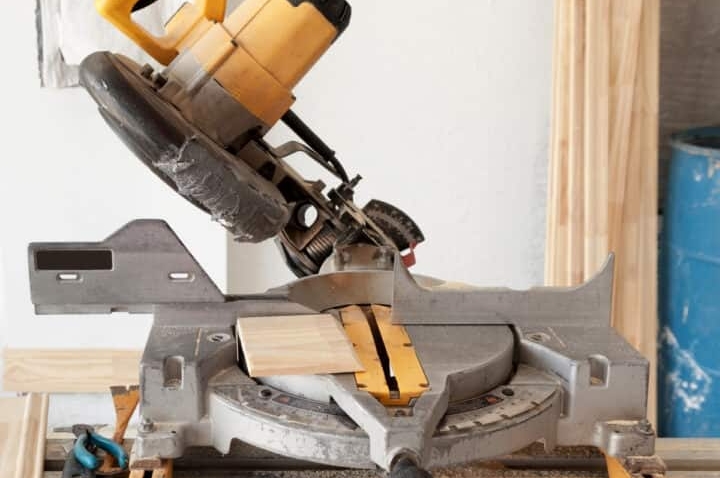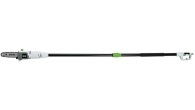
Choosing Between Single and Dual Bevel Miter Saws
Introduction to Bevel Miter Saws
Bevel miter saws are essential tools in any woodworking shop. They allow precise angle cuts on a variety of materials. When it comes to bevel miter saws, you have two main types: single bevel and dual bevel. Single bevel saws pivot the blade in one direction only, while dual bevel saws can tilt in two. This distinction affects the saw’s versatility, cost, and the types of cuts you can achieve.
Having the right saw can greatly influence the quality and efficiency of your work. Whether you’re a seasoned woodworker or a budding DIY enthusiast, understanding the differences between these two types of saws is crucial. It can help you decide which one fits your projects best, and what to expect from its use.
In the following sections, we’ll explore the single and dual bevel miter saws in detail. We’ll cover their uses, advantages and disadvantages, and the most noticeable differences between them. By the end, you’ll be armed with all the information needed to make an informed decision on which saw to choose for your specific woodworking requirements.
Understanding Single Bevel Miter Saws
What is a Single Bevel Miter Saw?
A single bevel miter saw pivots its blade in one direction only. This type allows for angled cuts across the width of materials. When more complex cuts are not needed, a single bevel saw can be a great choice. It’s simpler and typically easier to handle than its dual bevel counterpart. With this saw, users must flip the material to cut the opposite angle.
Usage and Applications of Single Bevel Saws
Single bevel saws are ideal for straight and angled cuts. They work well for tasks such as framing, simple moldings, and creating basic joints. Due to their single-direction tilt, these saws suit projects that don’t require complex angles. They’re a good fit for beginners or for those with straightforward cutting needs.
Pros and Cons of Using Single Bevel Saws
Pros:
- Good for basic cuts
- Less costly than dual bevel saws
- Lighter and more portable for easy moving
Cons:
- Limited to one side tilting, less versatile
- Flipping the workpiece is necessary for opposite bevel cuts
- Can be time-consuming for projects with many bevel cuts
Exploring Dual Bevel Miter Saws
What is a Dual Bevel Miter Saw?
A dual bevel miter saw can pivot its blade in two directions, left and right. This type of saw allows for more complex bevel cuts without needing to flip the material. It’s ideal for intricate projects requiring angles on both sides of a piece. I.e. a crown molding. Dual bevel saws streamline the cutting process, adding efficiency for advanced users.
Usage and Applications of Dual Bevel Saws
Dual bevel miter saws shine in precision tasks like creating picture frames, installing baseboards, or detailed trim work. They excel in projects where repetitive, opposite-angle cuts are common. This saw type is a favorite for woodworkers tackling elaborate projects or for professionals in a fast-paced work environment.
Pros and Cons of Using Dual Bevel Saws
Pros:
- Increased versatility with two pivot directions.
- Saves time on projects with many bevel cuts.
- Eliminates the need to flip materials for opposite cuts.
Cons:
- Generally more expensive than single bevel saws.
- Can be heavier, reducing portability.
- Complexity may intimidate less experienced users.

Key Differences Between Single and Dual Bevel Saws
When comparing single bevel vs dual bevel miter saws, three key aspects stand out. These are the blade pivot direction, cost, and versatility with their cutting capabilities.
Blade Pivot Direction and Its Effects
The pivot direction of a bevel saw’s blade greatly impacts its functionality. A single bevel miter saw tilts in just one direction, typically to the left. This means that to cut the other side, you need to manually flip the workpiece. A dual bevel miter saw, on the other hand, tilts both ways, allowing for cuts on either side without flipping the material. This ability saves time and reduces the chance for error, making it a favorite for intricate jobs.
Cost Comparison
Price is a significant factor when choosing between these saws. Typically, single bevel miter saws are less expensive, making them accessible to those on a tight budget or beginners. Dual bevel saws, with their advanced features, come with a higher price tag. Therefore, they’re often considered a more substantial investment aimed at seasoned woodworkers or professionals.
Versatility and Cutting Capabilities
Versatility is where dual bevel miter saws truly shine. They excel in making diverse cuts, from simple straight lines to complex angles on both sides of a piece. This feature allows for a wider range of cutting tasks without the need to reposition the material. Single bevel saws offer less versatility but still handle basic cuts efficiently, making them suitable for simpler projects or less frequent use.

How to Choose the Right Bevel Miter Saw
Choosing the right bevel miter saw involves several factors.
Considerations for Selecting a Bevel Miter Saw
When selecting a bevel miter saw, consider the types of projects you undertake.
- Project Complexity: Complex projects might require the versatility of a dual bevel miter saw.
- Frequency of Use: For frequent use, a more durable saw is beneficial.
- Budget: Dual bevel saws are generally more costly than single bevel saws.
- Space Limitations: Consider the space you have in your workshop for storage.
- Portability Needs: If you need to transport the saw often, consider its weight and size.
When to Opt for a Single Bevel Miter Saw
Choose a single bevel miter saw for simpler tasks.
- Ideal for straightforward projects like basic framing or trim cutting.
- More affordable, making it suitable for hobbyists or budget-conscious users.
- Easier to operate and lighter, enhancing portability.
When to Opt for a Dual Bevel Miter Saw
A dual bevel miter saw is better for complex and varied cutting tasks.
- Best for projects requiring multiple angles, like crown molding installations.
- Saves time by not needing to flip the workpiece for opposite cuts.
- Though more expensive, it provides greater versatility and efficiency in cuts.
Safety Tips When Using Bevel Miter Saws
Using a bevel miter saw safely is crucial to prevent injuries. Here are essential safety tips to follow:
Wear Appropriate Safety Gear
Safety gear is a must. Always wear safety glasses and ear protection. Consider a dust mask if working in a less ventilated area.
Check the Saw Before Use
Always inspect your miter saw before using it. Ensure all parts are secure and the blade is sharp and free from defects.
Use Proper Support for Long Workpieces
Support long workpieces with stands or a workbench. This prevents the wood from shifting or tipping during cuts.
Keep Your Hands Safe
Keep your hands away from the blade. Use clamps to hold the workpiece when possible.
Maintain a Clean Workspace
Keep your workspace clean and free of offcuts and sawdust. This minimizes the risk of accidental slips or trips.
Don’t Remove Safety Devices
Never remove or tamper with safety devices on the saw. These are designed to protect you.
Follow Manufacturer’s Instructions
Always adhere to the manufacturer’s guidelines for operating and maintaining the saw. This ensures safety and effectiveness.
By observing these safety measures, you can use your bevel miter saw confidently and safely.

Conclusion: Making the Best Choice for Your Woodworking Needs
Choosing between a single bevel and a dual bevel miter saw boils down to your specific needs. Here’s what to consider for a wise decision.
- Assess Project Demands: Examine the types of cuts needed for your projects. Dual bevel saws excel in intricate, angle-heavy tasks.
- Budget Constraints: Remember that dual bevel saws have higher costs. Single bevel models are more budget-friendly.
- Experience Level: New to woodworking? A single bevel miter saw might be easier to start with.
- Work Speed Requirement: If you’re on tight deadlines or have high volume projects, a dual bevel saw could save precious time.
- Space and Portability: Limited workspace or need to move your saw? Single bevel saws are often lighter and more manageable.
Remember, the right tool will not only fit your immediate needs but also grow with your skills. Safety is paramount, so whatever choice you make, use your saw with care and always follow safety guidelines. Ultimately, the best saw for you is one that meets your project requirements and fits within your budget while ensuring efficiency and precision in your work.












Leave a Reply